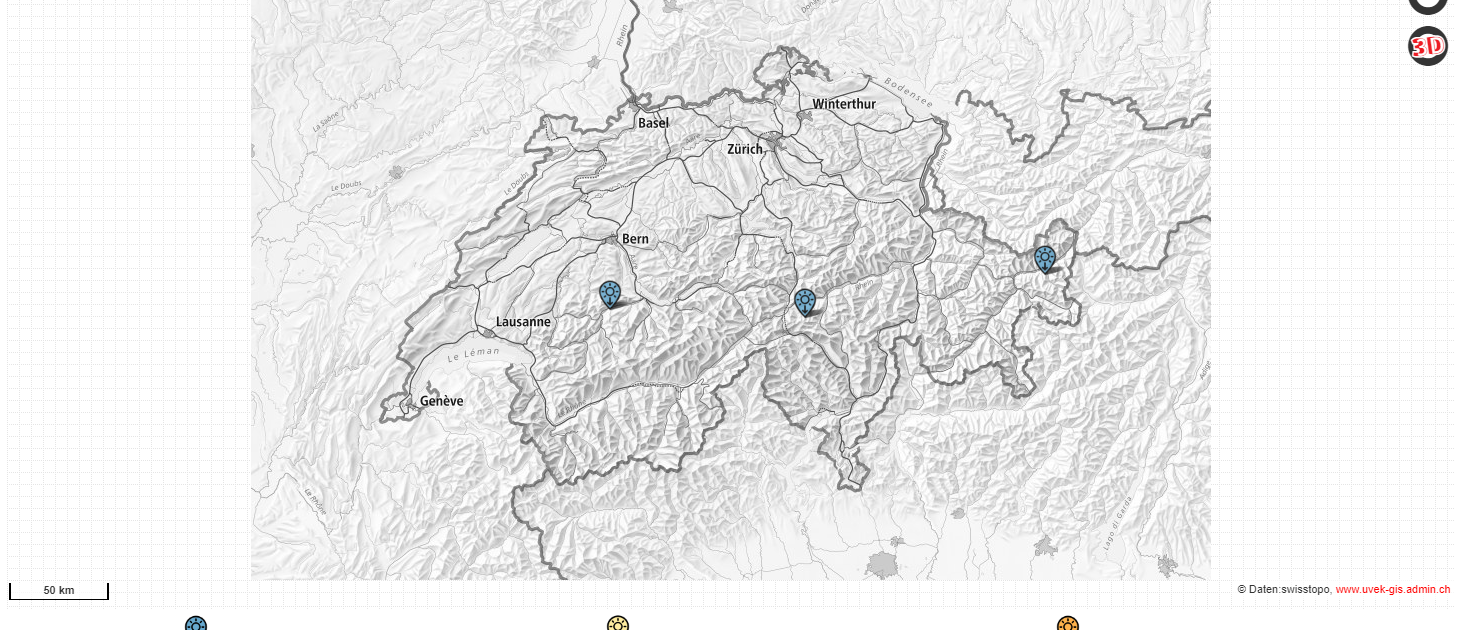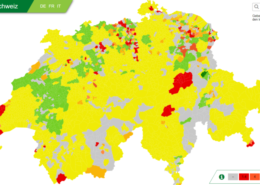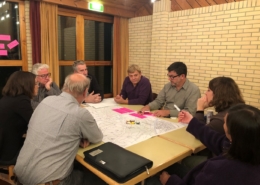Solarexpress: The new storymap shows where large-scale PV systems are being planned
At least 10 GWh per year in the final expansion phase and 500 kWh per 1 kW of installed capacity in the winter half-year. Photovoltaic systems must achieve this if they want to benefit from the simplified approval procedures and the one-off remuneration from the federal government of up to 60% of the investment costs. The first projects have now been made public and reported to the federal government. A new interactive storymap provides an overview of the planned projects.
Why is the Swiss Federal Office of Energy publishing this map? Who will benefit from it? Energeiaplus wanted to find out from Leo-Philipp Heiniger - a specialist in renewable energies - and Nico Rohrbach - a specialist in geoinformation.

Leo-Philipp Heiniger is a specialist for renewable energies. Image: SFOE
Leo-Philipp Heiniger: Large-scale photovoltaic systems are the subject of much discussion. Some see them as an important contribution to renewable electricity supply, especially in winter, while others fear negative effects on nature and the landscape. There is therefore a public interest in knowing where such projects are being planned or are in operation. Last but not least, the publication of data is also a requirement of the Energy Ordinance.
Energeiaplus: Numerous projects have already been presented in the media. Which ones can now be found on this storymap?
Leo-Philipp Heiniger: From the initial project idea to the building application, a project has to overcome quite a few hurdles. A project is only added to our list once it has been submitted to the public and is therefore already at an advanced stage. By mid-November 2023, three projects had been reported to us by the cantons, two in the canton of Graubünden and one in the canton of Bern. However, various others are being planned and are expected to be added to the list in the coming weeks and months.
The simplified authorizations formulated in the law will apply until the new large-scale photovoltaic systems allow a maximum total annual production of 2 terawatt hours (TWh) throughout Switzerland. Where do we stand with the projects reported so far?
At the moment, we are still a long way off this figure, but only three projects have been made public. These three projects are expected to have a capacity of 60 MW and, according to the information provided by the project developers, will enable an annual production of just under 90 GWh. The average expected specific winter yield is 656 kWh/kW. Votes on large-scale photovoltaic systems will be held in many municipalities in the coming weeks and months. We anticipate that further building applications will be submitted afterwards.
What information does the storymap provide about the projects?
The Storymap allows you to track the progress of large-scale PV installations in real time, from the public consultation to commissioning. The map provides an overview of where such systems are being planned or realized and also provides information on output and expected yield. As soon as the systems are fully operational, information on the subsidies paid is also published.

Nico Rohrbach is a geoinformation specialist at the SFOE; Image: SFOE
The Storymap data is available as OGD, i.e. Open Government Data. This means that the data can be downloaded and used. Who could benefit from this data? For what purpose?
Nico Rohrbach: Basically, this data is part of the information provided to the population and the economy about the progress of the Solar Express. It forms an important data basis that can also be useful for the media, universities and authorities. For example, the data can be easily compared with data from electricity production plants. This means that the large-scale photovoltaic projects can be compared with the actual monthly expansion of solar installations.
Information on the requirements for large-scale photovoltaic systems can be found here: Large-scale PV systems: What are the requirements? | SFOE magazine energeiaplus | Energy magazine of the Swiss Federal Office of Energy
Depending on their location and orientation, high-alpine photovoltaic systems can generate more electricity per installed kilowatt of power in the winter months than comparable systems in the lowlands. This is because the radiation conditions are better (thinner atmosphere, less fog) and because the sunlight is reflected by the snow (known as the albedo effect).
Interview: Brigitte Mader, Communications, Swiss Federal Office of Energy
 BFE
BFE
 Screenshot - MyNewEnergyWie grün ist der Strom in Ihrem Ort?
Screenshot - MyNewEnergyWie grün ist der Strom in Ihrem Ort?  Eco_DriveNeue Fragen, neues Glück: Die EcoDrive Rallye startet in die zweite Runde
Eco_DriveNeue Fragen, neues Glück: Die EcoDrive Rallye startet in die zweite Runde  BFETiefenlager radioaktive Abfälle: Partizipation für die Oberflächeninfrastruktur geht weiter
BFETiefenlager radioaktive Abfälle: Partizipation für die Oberflächeninfrastruktur geht weiter  Quelle: Scharfsinn / Alamy Stock Foto Bildnummer 2EDJ39ME-Fahrzeuge und –maschinen – Sieben innovative Projekte gefördert
Quelle: Scharfsinn / Alamy Stock Foto Bildnummer 2EDJ39ME-Fahrzeuge und –maschinen – Sieben innovative Projekte gefördert 
 Shutterstock
Shutterstock
Neuste Kommentare